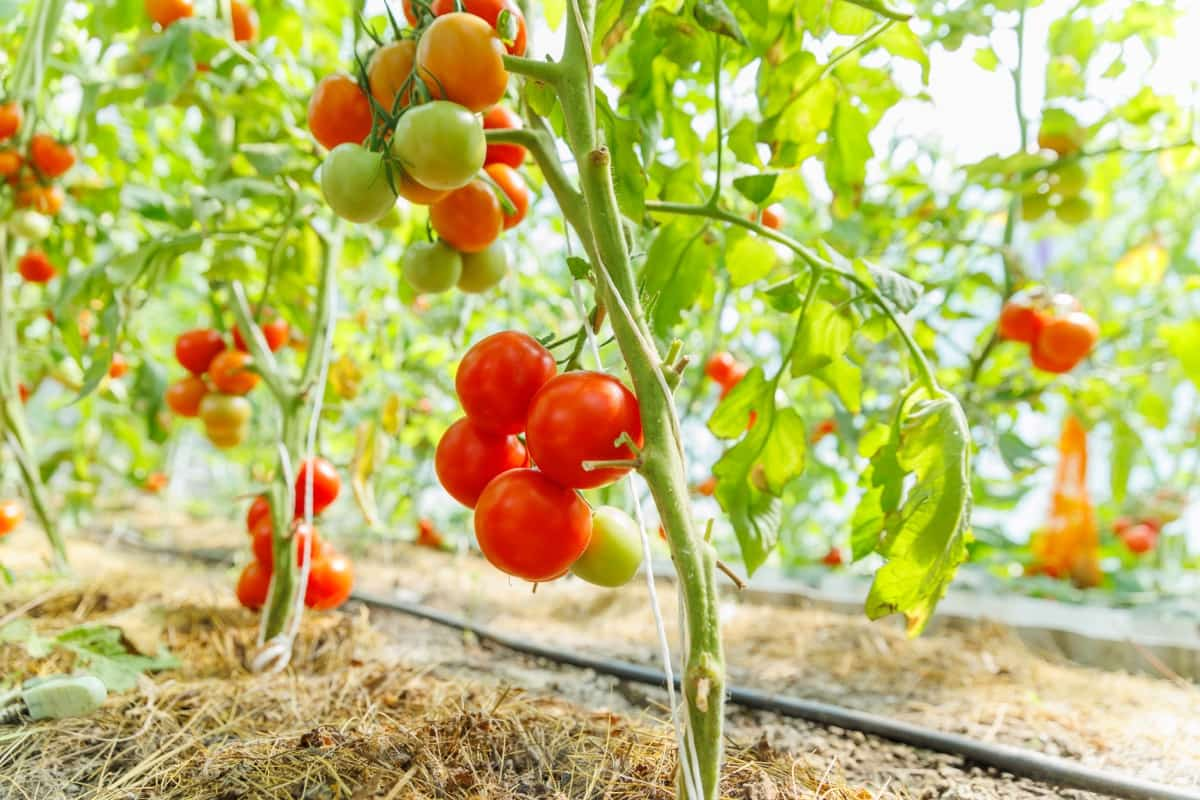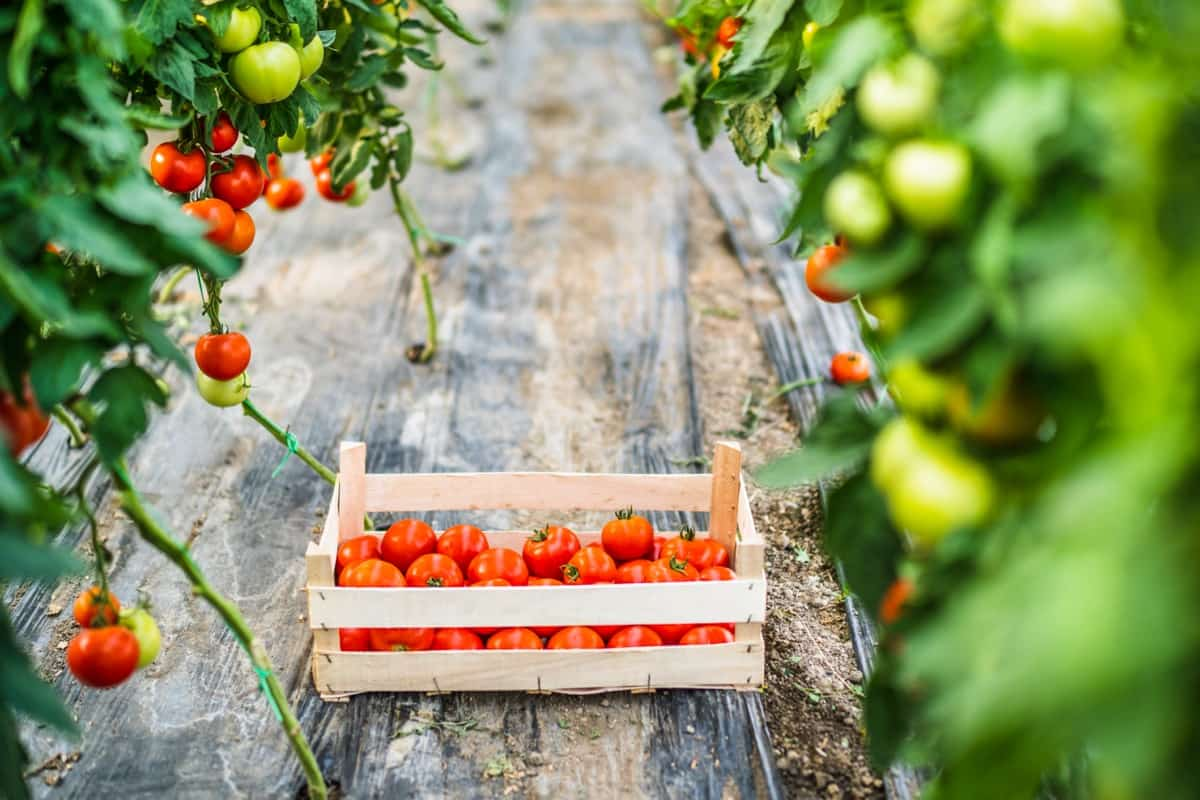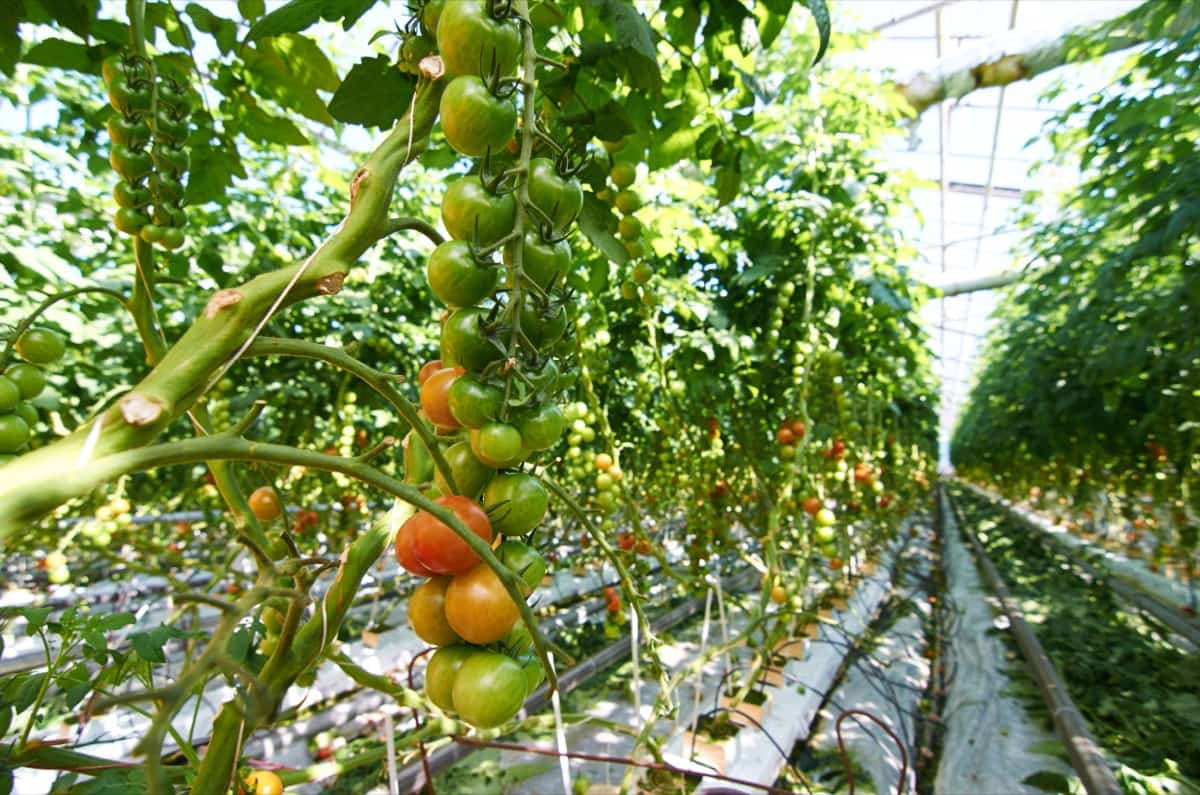Growing Tomatoes is a rewarding experience, but the taste of your Tomatoes can make all the difference. You can grow the tastiest Tomatoes in your garden by choosing the right variety, providing proper care, and using simple tricks like pruning and fertilizing. Remember to give your plants adequate sunlight, water, nutrients, and support. Choose the best variety of Tomatoes based on your needs and preferences. Finally, yet importantly, never forget that gardening is not only about fruits or vegetables but also an opportunity to get closer to nature.

Expert Tips to Grow the Tastiest Tomatoes
Choose the Tastiest Variety
Sungold – If you plan on growing Sungolds in your garden, ensure they get plenty of sunlight and water. They also benefit from planting in well-draining soil rich in organic matter. One great thing about Sungold Tomatoes is that they produce a lot of fruit throughout the growing season. By removing some of the excess foliage and branches, you can encourage more energy to go into producing fruit instead.
Brandywine – One thing that makes it unique is its flavor profile. It has a rich, sweet taste with just enough acidity to balance it out. Brandywine also tends to have a longer growing season than other varieties, so be patient when waiting for these beauties to ripen on the vine. They also benefit from regular pruning and staking as they can grow tall.
Cherokee Purple – One unique characteristic of Cherokee Purple Tomatoes is their deep purple color with green shoulders. This striking coloration makes them stand out in the garden and on the plate. To grow Cherokee Purple Tomatoes successfully, providing them with full sun, well-draining soil, and consistent moisture is important. When harvesting Cherokee Purple Tomatoes, it’s best to wait until they are fully ripe for maximum flavor.
Sweet Million – This indeterminate Tomato plant produces small, bright red Tomato clusters throughout the growing season. One great thing about Sweet Million is that it’s fairly easy to grow and maintain.
In case you missed it: How to Control Pests and Diseases in Tomato Crop: Causes, Symptoms, Chemical, and Biological Management

Green Zebra – Green Zebra is a unique Tomato variety that stands out due to its striking appearance. Besides its distinct look, Green Zebra offers a milder flavor than other Tomato varieties. One of the advantages of growing Green Zebra is that it’s relatively easy to cultivate. These Tomatoes thrive in warm weather conditions with regular watering and fertilization.
Lemon Boy – One of the great things about growing Lemon Boy Tomatoes is that they are relatively easy to care for. They require full sun exposure and regular watering, but other than that, they can adapt well to various soil conditions. Lemon Boy Tomatoes also look beautiful – bright yellow and smooth skin texture. Their vibrant hue adds an extra pop to any dish or garden bed arrangement.
Go for Companion Planting
The idea behind companion planting is that certain plant combinations can improve soil quality, repel pests, attract beneficial insects, and boost the overall health of your garden. You should consider some excellent companion plants when it comes to Tomatoes. One great Tomato companion plant is Basil. Not only does Basil taste delicious with Tomatoes, but it also repels harmful insects like aphids and spider mites. Additionally, Basil has been shown to increase the yield of nearby Tomato plants. Another excellent choice for a Tomato companion plant is the Marigold.
These beautiful flowers act as natural insect repellents and help keep pests away from your precious crop. Carrots are another fantastic option for a Tomato companion plant. Carrots have long taproots that help aerate the soil while retaining moisture levels essential for healthy Tomatoes. Onions are another excellent option when it comes to companionship in your garden. Onions work well with Tomatoes because they naturally repel pests like aphids and cutworms while offering antibacterial properties that can benefit neighboring vegetables.
Use Epsom Salt
If you want a simple way to improve the taste of your homegrown Tomatoes, look no further than Epsom salt. This all-natural mineral compound contains magnesium essential in plant growth and development. To use Epsom salt on your Tomato plants, add one tablespoon to the soil around each plant when transplanting them into your garden. Then, once a month, sprinkle another tablespoon around each plant throughout the growing season.
In case you missed it: Epsom Salt For Gardening, Uses, Application, Benefits

The magnesium in Epsom salt helps boost chlorophyll production in plants, leading to healthier leaves and stronger stems. This can result in larger yields of high-quality fruit bursting with flavor. You can improve the taste of your Tomatoes; using Epsom salt can also help prevent common issues like blossom end rot and yellowing leaves caused by nutrient deficiencies.
Add Baking Soda
Adding baking soda to your Tomato plants might sound unusual, but it has proven benefits that can improve the growth and taste of your Tomatoes. Baking soda is a natural fungicide and helps control fungal diseases in plants. Mix one tablespoon of baking soda and one gallon of water solution to spray on the foliage and soil around your Tomato plants once a week. This will help prevent fungal diseases like powdery mildew from attacking your Tomato plants. Baking soda also increases the sweetness of Tomatoes by reducing their acidity levels.
In case you missed it: Baking Soda Miracles In Plants – How To Apply

As a result, you get sweeter and more flavorful Tomatoes. It’s important not to overdo it when using baking soda on your Tomato plants because the excessive application can damage them. You should follow the recommended dosage and frequency for best results. In addition to improving taste and preventing disease, adding baking soda can promote healthy growth because it contains essential minerals such as sodium, potassium, calcium, magnesium, phosphorus, and zinc that are beneficial for plant health.
Put Fish Heads
You should consider using fish heads to grow the tastiest Tomatoes in your garden. Fish heads can give your Tomato plants essential nutrients that boost their growth and flavor. Fish is a rich nitrogen, phosphorus, and potassium source for healthy plant growth. These nutrients help improve soil fertility by promoting beneficial microbial activity and increasing water-holding capacity.
When you bury fish heads in the soil near your Tomato plants, they slowly release these nutrients over time as they decompose. This offers a slow-release fertilizer effect that provides long-term benefits to your Tomato plants. Besides providing vital nutrients, fish heads contain amino acids that work wonders on your plants’ roots. The amino acids stimulate root growth and development while boosting overall plant vigor. Only one per planting hole will do the trick effectively without causing any problems with pest attraction later on.
Boost Flavor with Molasses
Molasses is a sweetener and a natural source of minerals, vitamins, and micronutrients essential for plant growth. Adding molasses to the soil can boost the flavor of your Tomatoes while providing them with nutrients that promote healthy growth. When you add molasses to the soil, it stimulates microbial activity in the root zone.
In case you missed it: How to Control Pests and Diseases in Tomato Crop: Causes, Symptoms, Chemical, and Biological Management

The microbes break down organic matter into simpler forms that plants can easily absorb. This process releases nutrients like nitrogen, phosphorus, and potassium, which are crucial for plant health. In addition to providing plant nutrients, molasses is a natural pesticide, attracting beneficial insects like ladybugs and lacewings. These insects prey on harmful pests like aphids and spider mites, which can damage Tomato plants.
To use molasses as a fertilizer, mix 1-2 tablespoons in water and apply it directly to your Tomato plants every two weeks during the growing season. Alternatively, add 1-2 cups of molasses per cubic yard of compost before applying it to your garden beds. Incorporating molasses into your gardening routine improves Tomato flavor and promotes overall plant health without harsh chemicals or synthetic fertilizers.
Use Bone Meal
If your Tomato plants thrive and produce healthy, flavorful fruits, then using a bone meal is worth considering. Bone meal is a naturally-sourced phosphorus-rich fertilizer for strong root development and flower formation. When growing Tomatoes, adequate phosphorus levels can make all the difference in plant health and fruit quality. This makes a bone meal an excellent addition to your Tomato garden to boost yields and flavor.
Using bone meal is also relatively easy; sprinkle some around the base of each plant before covering it with soil or mulch. The slow-release properties of this organic fertilizer mean that nutrients will gradually become available over time as the plant grows. In addition to helping Tomatoes grow stronger roots and more abundant flowers, bone meal can improve overall soil health by increasing its alkalinity. If you’ve noticed issues with acidic soil in your garden, adding some bone meal could help restore balance.
Go for the Vine Ripening Technique
When it comes to growing Tomatoes, many people make the mistake of picking them too early, resulting in a lack of flavor. The vine ripening technique is an effective way to ensure that your Tomatoes are delicious. It’s simply leaving the Tomato on the vine until it has matured and turned its appropriate color. This allows for natural sugars to develop and intensify the taste.
Don’t rush into picking your Tomatoes just because they look ripe. Wait until they’ve reached their maximum size and color before harvesting them. Using this method is that it can help extend the life of your Tomatoes after they’re picked. Since they were allowed to mature on the vine fully, their skin would be thicker and more resistant to spoilage.
Pruning
By removing certain parts of the plant, you can encourage better growth and nutrient distribution throughout the Tomato vine. But pruning isn’t just about cutting away branches – it’s also about understanding how plants grow. First, ensure you have sharp pruning shears or scissors to avoid damaging the vines. Then, remove any suckers that grow between the main stem and branches. These suckers divert energy away from fruit production and remove as soon as they appear.
In case you missed it: Pruning Houseplants – Basics, Ideas, Techniques, Tips For Indoor, Balcony

Next, consider thinning out some leaves at the bottom of your Tomato plant to increase airflow around its base. This reduces moisture build-up, which can lead to fungal diseases like blight. Pay close attention to what part of each branch you’re pruning off – this will impact future growth patterns in your plant. Prune above a leaf node instead of below it so new growth will be encouraged upwards rather than outwards.
Harvest at the Right Time
When it comes to harvesting Tomatoes, timing is everything. Picking them at the right time will ensure they are ripe and flavorful while waiting too long can cause them to become overripe or even spoiled. It’s important not to rush the process; Tomatoes need time on the vine for their flavor to develop properly.
This means resisting the temptation to pick them early because you’re excited about your harvest. On the other hand, leaving Tomatoes on the vine for too long can also be detrimental. Overripe Tomatoes may start to split or rot from within, ruining an otherwise good crop. Aim to harvest your Tomatoes when fully mature but before they become overly soft or start showing signs of decay.
Conclusion
Growing the tastiest Tomatoes in your garden requires effort, but it is a rewarding experience. Following these tricks ensures your Tomato plants thrive and provide abundant, delicious fruit. Start by selecting the right soil for your Tomatoes and ensuring they receive enough sunlight throughout the day. Water them consistently, using fertilizer to enhance their growth and support them as they mature. Keep a check for pests and diseases, treating any issues immediately to prevent them from spreading.
- Cabbage Seed Germination and Selection
- Broccoli Seed Germination and Selection
- Asparagus Seed Germination and Variety Selection
- Seasonal Flower Gardening: Best Practices for Spring, Summer, Fall, and Winter
- How to Grow Hibiscus from Flower
- Plantation Ideas for Home Decoration: A Beginners Guide
- Flower Garden Designs and Layouts for Beginners
- Planting and Spacing Techniques in Papaya: A Beginner’s Guide
- Growing Gold: Essential Techniques for Planting Pineapples
- How to Make Kalanchoe Plant Bushy: Home Remedies and Solutions
- 11 Reasons Why Your Gardenia is Not Blooming: Home Remedies and Solutions
- Eco Elegance: The Guide to Designing a Drought-Tolerant Landscape
- Gardening on a Slope: Strategies for Hillside Landscaping
- Nourish and Flourish: Top Organic Mulches for Thriving House Plants
- Everything You Want to Know about Indian Mogra Flower: Discover Uses and Growing
- Green Thumb Success: Expert Tips for Cultivating Greenhouse Pumpkins All Year Round
- Maximize Growth & Flavor: The Ultimate Guide to Companion Planting in Herb Gardens
- How to Control Rhododendron Problems Naturally: Home Remedies and Organic Ways to Fix Them
- Natural Magic: The Remarkable Benefits of Cinnamon for Plants
- Best Steps to Revive Dying Tulip with Natural and Organic Treatment
- 10 Reasons Why Your Angel Trumpet is Not Blooming: Remedies and Treatment
- How to Fix Periwinkle Leaf and Flower-Related Problems: Natural Remedies and Solutions
- How to Fix Zinnias Leaf and Flower Problems: Discover Natural and Home Remedies
- Organic Steps to Induce Lemon Tree Flowers: A Comprehensive Guide
- Bloom Booster: Crafting the Perfect Homemade Bougainvillea Fertilizer
- Optimizing Growth: A Guide to Applying NPK Fertilizer for Potted Plants
- 10 Best Homemade Fertilizers for Rubber Plant: DIY Recipes and Application Method
- How to Boost Female Pumpkin Flowers: Effective Steps for More Flowers and High Yields
- Transform Your Indoor Garden: Top Benefits of Pink Salt for Houseplants
- 10 Best Homemade Fertilizers for Peacock Plants (Calathea): Easy DIY Guide
- Unlock Blooms: 9 Reasons Why Your Potted Chrysanthemum is Not Blooming
- 8 Reasons Why Your Potted Hibiscus is Not Blooming: Fix it with Simple Solutions
- Unlock Blooms: 9 Key Reasons Your Potted Frangipani Won’t Flower
- 10 Reasons Why Is My Ice Plant Not Blooming: Remedies and Treatment
- 10 Reasons Why My Potted Hydrangea Not Blooming: Treatment and Remedies
- 10 Reasons Why is My Wisteria Not Blooming: Remedies and Treatment